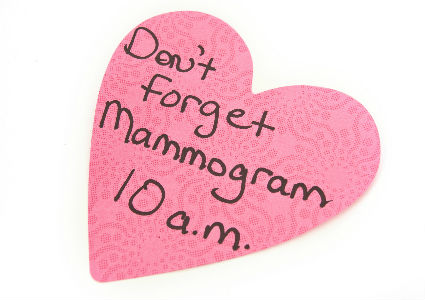By Serena D. Tidwell M.D, Midtown OB/GYN
We traditionally think of breast tissue as being made of milk glands and ducts. However, between the milk glands and ducts are two other types of tissue: fatty and connective tissue. Dense breasts are present when there is an excess of the connective tissue.
This finding is important for two reasons: First, it is associated with an increased risk of breast cancer. Second, it limits the effectiveness of mammograms, which are the most traditional method used to screen for breast cancer.
Estimates for the incidence of breast density vary widely, ranging from 35-45%. It is more common in younger women (before menopause). In postmenopausal women, taking hormone replacement therapy will increase breast density. A woman with dense breasts is up to 5 times more likely to develop breast cancer.
There are 4 categories of breast density:
- No density – About 1/10 women
- Mild density – About 4/10 women
- *Moderate density – About 4/10 women
- *Extremely dense – About 1/10 women
*Patients with moderate and extreme density are good candidates for additional screening techniques.
Most women have never heard of breast density and very few know their personal breast density. In 2009, Connecticut passed the first state mandatory notification law, which meant that all women who had a mammogram in that state were also notified of their breast density. A patient who was diagnosed with advanced breast cancer 6 weeks after a normal mammogram championed this law. Only after receiving the breast cancer diagnosis was she told that her very dense breast tissue had made the mammogram difficult to read.
 On January 1, 2016, Louisiana will become the 24th state to require density notification. In our area, Alabama requires notification. A bill has been introduced to require notification in Georgia but has not yet passed.
On January 1, 2016, Louisiana will become the 24th state to require density notification. In our area, Alabama requires notification. A bill has been introduced to require notification in Georgia but has not yet passed.
Thankfully, all Mammography facilities in our region are now reporting breast density on Mammogram reports given to the ordering medical Provider. Most facilities are also notifying patients.
If you have a mammogram and your density is not on your report, I would strongly encourage you to contact the facility where it was performed and / or ask your medical provider your density category.
For women with moderate or extreme density, additional testing is available. The categories of additional testing are:
- Breast Ultrasound. In our practice, this is our preferred and recommended method. This is very comprehensive global breast ultrasound.
- Breast Tomo/3D. This is very exciting new technology. Limitations to this are increased radiation and most insurance companies consider it experimental and therefore do not cover.
- Breast MRI. This is a very good test; however, it is usually used after Ultrasound or Tomo/3D.
Critics of breast density notification laws and additional screening cite increased false positives, which lead to “unnecessary” biopsies. Personally, I completely disagree. As someone who cares for many patients who have had both positive and negative biopsies and as someone who has had a breast biopsy, I can say that in my practice patients do not see biopsies in that light. They want aggressive screening to optimize early diagnosis.
There are many good references regarding breast density on the Internet. Here are two links that I particularly like:
Dr. Serena Tidwell is an OB/GYN with Midtown OB/GYN. She completed residency at Wake Forest University after graduating from The Medical College of Georgia and Emory University. She is the 2013 winner of our Choice Award for Best OB/GYN.
Photo credit: Dollarphotoclub.com



